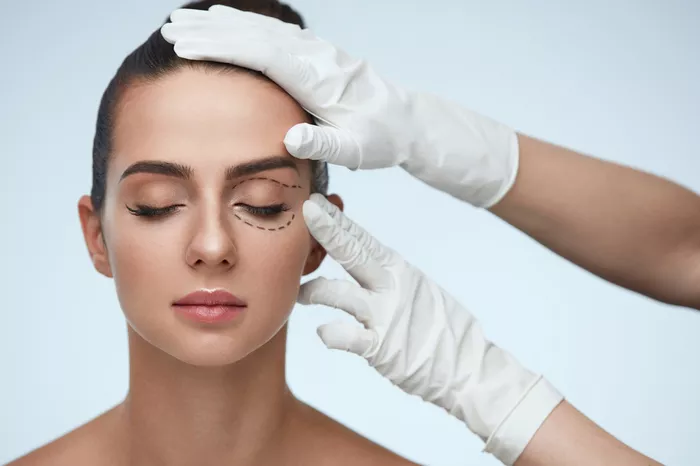Lower blepharoplasty, also known as lower eyelid surgery, is a cosmetic procedure aimed at rejuvenating the appearance of the lower eyelids by addressing issues such as under-eye bags, puffiness, and excess skin. If you’re considering lower blepharoplasty, you may be wondering about the duration of the surgery. In this article, we will explore the lower blepharoplasty procedure in detail, discuss factors that can affect the duration of the surgery, and provide a general idea of how long the procedure typically takes.
Understanding Lower Blepharoplasty
Lower blepharoplasty is a surgical procedure that targets the lower eyelids to enhance their appearance and address various concerns associated with aging, genetics, or other factors. The procedure involves the removal or repositioning of excess fat, the tightening of underlying muscles and tissues, and the removal of sagging skin. Lower blepharoplasty can provide a refreshed and rejuvenated look, making you appear more youthful and vibrant.
Factors Affecting the Duration of Lower Blepharoplasty
Several factors can influence the duration of lower blepharoplasty surgery. The specific technique used, the complexity of the case, and any additional procedures performed in conjunction with lower blepharoplasty can all impact the surgical time. Here are some factors that can affect the duration:
1. Technique Used
Different techniques can be employed during lower blepharoplasty, including the transconjunctival approach and the subciliary approach. The choice of technique depends on the patient’s unique needs and the surgeon’s expertise. The transconjunctival approach involves making an incision inside the lower eyelid, while the subciliary approach involves an incision just below the lower eyelash line. The technique used can affect the surgical time.
2. Extent of Correction
The extent of correction required for each individual can vary. Some individuals may require only minor adjustments, while others may require more extensive work to address significant under-eye bags, excess fat, or loose skin. The complexity of the case and the amount of correction needed can influence the duration of the surgery.
3. Additional Procedures
In some cases, lower blepharoplasty may be combined with other cosmetic procedures to achieve optimal results. For example, a patient may opt to have a fat transfer to restore volume to hollowed areas or undergo a chemical peel to improve skin texture and tone. If additional procedures are performed concurrently with lower blepharoplasty, the surgical time will be extended accordingly.
4. Surgeon’s Experience
The experience and skill of the surgeon can also impact the duration of the surgery. A highly experienced surgeon who specializes in lower blepharoplasty is likely to have developed efficient techniques and approaches that can minimize surgical time without compromising the quality of the results.
Estimated Duration of Lower Blepharoplasty Surgery
On average, the duration of lower blepharoplasty surgery ranges from 1 to 2 hours. However, it is important to note that this is a general estimate, and the actual time required may vary depending on the factors mentioned above. During the initial consultation with a qualified plastic surgeon, they will evaluate your specific needs, discuss your desired outcomes, and provide a more accurate estimate of the surgical time based on your individual case.
The Lower Blepharoplasty Procedure
Here is an overview of what to expect during the lower blepharoplasty procedure:
1. Anesthesia: Lower blepharoplasty is typically performed under local anesthesia with sedation or general anesthesia, depending on the patient’s preference and the surgeon’s recommendation. The chosen anesthesia ensures that you remain comfortable and pain-free throughout the procedure.
2. Incision Placement: The surgeon carefully plans the incision placement to achieve optimal results and minimize visible scarring. Depending on the chosen technique, incisions may be made inside the lower eyelid (transconjunctival approach) or just below the lower eyelash line (subciliary approach).
3. Tissue Adjustment and Removal: Through the incisions, the surgeon addresses the specific concerns of each patient. Excess fat may be removed or repositioned to reduce under-eye bags, sagging skin is tightened, and underlying muscles and tissues may be adjusted. The goal is to create a more youthful and harmonious appearance.
4. Incision Closure: Once the necessary adjustments are made, the surgeon carefully closes the incisions using fine sutures. In some cases, dissolvable sutures may be used, eliminating the need for suture removal.
Recovery and Postoperative Care
After lower blepharoplasty surgery, you will be closely monitored in a recovery area until the anesthesia wears off. You will likely experience some swelling, bruising, and mild discomfort in the first few days following the procedure. Your surgeon will provide specific postoperative instructions to promote optimal healing and minimize complications. Here are some general guidelines:
1. Cold Compresses: Applying cold compresses to the eyes can help reduce swelling and bruising. Your surgeon will provide specific instructions on the frequency and duration of cold compress application.
2. Medications: Your surgeon may prescribe pain medications and antibiotics to manage any discomfort and reduce the risk of infection. It is important to take these medications as directed.
3. Rest and Relaxation: Adequate rest and limited physical activity are essential during the initial recovery period. It is recommended to keep your head elevated while resting to minimize swelling.
4. Follow-Up Appointments: Your surgeon will schedule follow-up appointments to monitor your progress, remove any sutures, and address any concerns or questions you may have.
Conclusion
Lower blepharoplasty is an effective procedure for rejuvenating the appearance of the lower eyelids and addressing concerns such as under-eye bags, puffiness, and excess skin. While the duration of the surgery can vary based on several factors, including the technique used, the extent of correction required, and the surgeon’s experience, it generally ranges from 1 to 2 hours. Consultation with a qualified plastic surgeon is crucial to assess your unique needs, discuss the surgical plan, and provide a personalized estimate of the surgical time. By choosing a skilled surgeon and following postoperative care instructions, you can look forward to achieving a refreshed and rejuvenated appearance that enhances your overall facial aesthetics.


